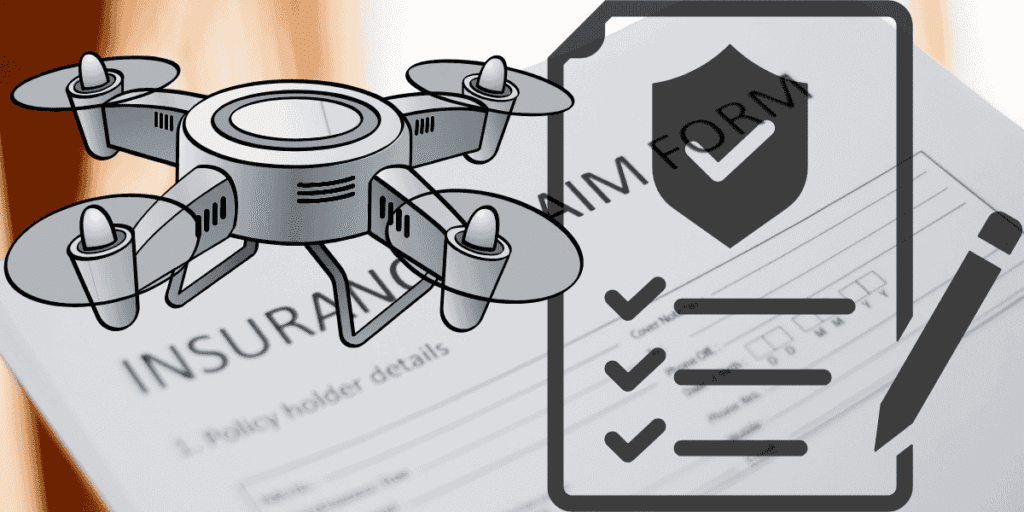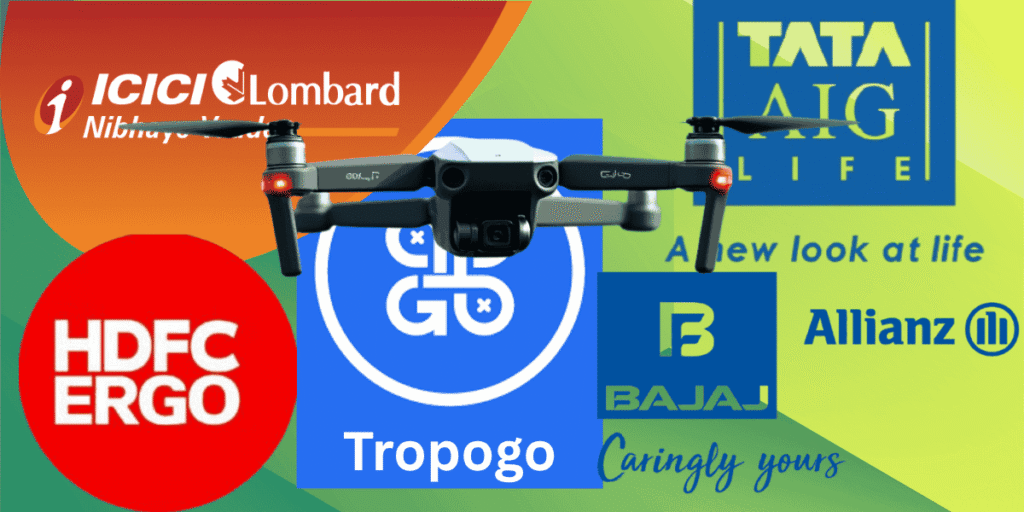Drone Insurance Claim Process can seem daunting, but with the right approach, it’s a manageable task that ensures you recover losses efficiently. Whether you’re navigating a drone insurance claim in India or elsewhere, understanding the steps and preparing the necessary drone damage documents can make all the difference.
This comprehensive guide outlines the entire process, from the critical 24-hour claim ritual to avoiding claim rejections, with a detailed document checklist and FAQs to address common concerns.
Introduction to Drone Insurance Claims
Drones, or Unmanned Aerial Vehicles (UAVs), have become indispensable tools across industries like agriculture, filmmaking, logistics, and surveying. However, accidents such as crashes, theft, or third-party damage are not uncommon.
In India, the Directorate General of Civil Aviation (DGCA) mandates third-party liability insurance for drones weighing over 250 grams, making insurance a legal necessity for commercial operators. Filing a drone insurance claim in India requires a systematic approach to ensure compliance with regulations and a smooth settlement process.
This blog post provides a step-by-step guide to the Drone Insurance Claim Process, focusing on the critical 24-hour claim ritual, must-have drone damage documents, and strategies to avoid claim rejections, such as flying in restricted red zones. With the latest data and practical insights, this guide aims to equip drone operators with the knowledge to navigate claims confidently.
Understanding the Drone Insurance Claim Process

The Drone Insurance Claim Process involves several stages, from reporting the incident to receiving the settlement. In India, the process is governed by DGCA guidelines and insurance provider policies. The key to a successful claim lies in timely action, accurate documentation, and adherence to regulatory requirements. Below, we break down the process into actionable steps, emphasizing the 24-hour claim ritual and the importance of proper documentation.
Step 1: The 24-Hour Claim Ritual
The first 24 hours after a drone incident are critical for initiating the Drone Insurance Claim Process. This period, often referred to as the 24-hour claim ritual, involves three essential actions: filing a First Information Report (FIR), notifying the DGCA, and preserving evidence. Acting promptly ensures compliance with legal and insurance requirements, reducing the risk of claim rejection.
1.1 Filing a First Information Report (FIR)
If your drone causes damage to third-party property, injures a person, or is involved in a theft or loss, filing an FIR with the local police is a crucial first step. The FIR serves as an official record of the incident and is often required by insurers to validate the claim. Here’s how to proceed:
- Visit the Nearest Police Station: Report the incident to the local police station within 24 hours. Provide details such as the date, time, location, and nature of the incident (e.g., crash, theft, or third-party damage).
- Include Drone Details: Mention the drone’s Unique Identification Number (UIN), make, model, and purpose of operation (commercial or recreational).
- Obtain a Copy of the FIR: Request a stamped copy of the FIR, as it is a critical document for the drone insurance claim in India.
Failing to file an FIR promptly can delay the claim process or lead to rejection, especially in cases involving third-party liability.
1.2 Notifying the DGCA
The DGCA, India’s aviation regulatory body, must be informed of any drone incident within 24 hours, as per the Drone Rules, 2021. This step is mandatory for registered drones and commercial operators. To notify the DGCA:
- Access the Digital Sky Platform: Log into the DGCA’s Digital Sky platform, where your drone is registered, to report the incident.
- Provide Incident Details: Submit a detailed report, including the UIN, date, time, location, and a brief description of the incident (e.g., crash, malfunction, or flyaway).
- Attach Supporting Evidence: Include photographs, videos, or flight logs, if available, to support your report.
The DGCA may investigate the incident to ensure compliance with regulations, such as avoiding restricted red zones. Non-compliance can result in claim rejection or legal penalties.
1.3 Preserving Evidence
Preserving evidence is vital for substantiating your drone insurance claim in India. Insurers rely on evidence to assess the validity of the claim and determine the extent of damage. Follow these steps to preserve evidence effectively:
- Photograph the Scene: Take clear, high-resolution images of the drone, the crash site, and any damaged property or injuries. Capture multiple angles to provide a comprehensive view.
- Secure Flight Logs: Retrieve flight logs from the drone’s controller or app, which record flight paths, altitudes, and operational data. These logs are critical drone damage documents.
- Collect Witness Statements: If there were witnesses to the incident, obtain their contact details and written statements, if possible.
- Avoid Tampering: Do not attempt to repair or move the drone until the insurer or surveyor has assessed it, as this could invalidate the claim.
By completing these actions within 24 hours, you lay a strong foundation for a successful Drone Insurance Claim Process.
Step 2: Contacting Your Insurance Provider
Once the 24-hour claim ritual is complete, the next step is to notify your insurance provider. Most insurers require immediate notification of an incident, typically within 48–72 hours. Here’s how to proceed:
- Call or Email the Insurer: Contact your insurer through their dedicated claims hotline or email, providing your policy number and a brief overview of the incident.
- Complete the Claim Form: Most insurers provide a claim form, either online or through their app. Fill out the form with accurate details, including the FIR number, DGCA report reference, and a description of the incident.
- Submit Initial Documents: Provide preliminary drone damage documents, such as the FIR, DGCA notification confirmation, and photographs of the damage. Additional documents may be requested later.
Reputable insurers like ICICI Lombard, TATA AIG, and TropoGo (in partnership with HDFC ERGO) offer streamlined claim processes and dedicated dashboards for submitting claims. For example, TropoGo allows users to upload documents and track claims via its app, ensuring transparency and efficiency.
Step 3: Preparing Must-Have Drone Damage Documents
A well-documented claim is less likely to face delays or rejection. The following drone damage documents are essential for the Drone Insurance Claim Process in India:
| Document | Purpose | Source |
|---|---|---|
| DGCA Unique Identification Number (UIN) | Verifies the drone’s registration and compliance with DGCA regulations. | Digital Sky Platform |
| Purchase Invoice | Confirms the drone’s value and ownership; required for hull coverage claims. | Drone retailer or manufacturer |
| Flight Logs | Provides data on flight path, altitude, and operational status during the incident. | Drone controller or app |
| Repair Invoices | Details repair costs for damaged drone components; submitted post-assessment. | Authorized repair center |
| FIR Copy | Official record of the incident, especially for third-party liability claims. | Local police station |
| Photographs/Videos | Visual evidence of damage to the drone, property, or injuries. | Taken at the incident site |
| Pilot License/Certificate | Verifies the operator’s qualifications, required for commercial claims. | DGCA-approved training organization |
| Insurance Policy Document | Confirms coverage details and policy terms. | Insurance provider |
3.1 DGCA Unique Identification Number (UIN)
The UIN is a mandatory requirement for drones weighing over 250 grams in India. It confirms that the drone is registered with the DGCA and complies with the Drone Rules, 2021.
Without a valid UIN, your claim may be rejected, as unregistered drones are considered illegal for operation.
3.2 Purchase Invoice
The purchase invoice establishes the drone’s value and ownership. Insurers use this document to assess hull coverage claims for repairs or replacements.
Ensure the invoice is dated on or after 2019, as some insurers may not cover older drones.
3.3 Flight Logs
Flight logs are critical drone damage documents that provide a detailed record of the drone’s activity during the incident. They include data such as:
- Flight path and altitude
- Speed and battery status
- GPS coordinates
- Any error codes or malfunctions
Retrieve logs from the drone’s app (e.g., DJI Fly or Autel Explorer) or controller. These logs help insurers determine whether the incident occurred due to pilot error, mechanical failure, or external factors like weather conditions.
3.4 Repair Invoices
Once the insurer’s surveyor assesses the damage, you may need to submit repair invoices from an authorized repair center. These invoices detail the cost of repairing or replacing damaged components, such as motors, cameras, or propellers.
Avoid starting repairs before the surveyor’s approval, as premature repairs can lead to claim rejection.
3.5 Additional Documents
Depending on the insurer, you may need to provide additional documents, such as:
- Incident Report: A written account of the incident, including the cause and circumstances.
- Third-Party Damage Proof: If the claim involves third-party property or injury, include repair estimates or medical bills.
- Maintenance Logbook: A record of the drone’s maintenance history, demonstrating responsible ownership.
Organize these documents in a digital folder or use the insurer’s online portal for easy submission. Platforms like TropoGo provide dashboards where you can upload and manage drone damage documents efficiently.
Step 4: Surveyor Assessment and Claim Processing
After submitting the claim and documents, the insurer appoints a surveyor to assess the damage. This step typically occurs within 3–7 days, depending on the insurer’s turnaround time (TAT). The surveyor’s role is to:
- Inspect the Drone: Verify the extent of damage to the drone and associated equipment.
- Review Flight Logs: Analyze flight data to determine the cause of the incident.
- Assess Third-Party Damage: Evaluate any property damage or injuries caused by the drone.
- Estimate Repair Costs: Provide a report on repair or replacement costs, which the insurer uses to calculate the settlement.
During this stage, cooperate fully with the surveyor and provide any additional drone damage documents requested. The surveyor’s report is a key factor in determining whether your claim is approved or rejected.
Step 5: Claim Approval or Rejection
Once the surveyor submits their report, the insurer reviews it alongside your drone damage documents to make a decision. The outcome can be:
- Approval: The insurer agrees to cover the claim, either by reimbursing repair costs, replacing the drone, or compensating for third-party damages. The settlement amount depends on the policy’s coverage limits and deductibles.
- Rejection: The claim may be rejected if the insurer finds evidence of non-compliance, such as flying in red zones, lack of proper documentation, or intentional misuse.
If your claim is rejected, you have the right to appeal or enter a dispute resolution process. This may involve negotiation or mediation with the insurer to reach a fair resolution.
Step 6: Settlement and Policy Review
Upon approval, the insurer processes the settlement, which may involve:
- Repair Reimbursement: Payment for repair costs based on invoices.
- Drone Replacement: A new drone or equivalent cash value if the drone is deemed a total loss.
- Third-Party Compensation: Coverage for property damage or medical expenses caused by the drone.
After the claim is settled, review your insurance policy to ensure it meets your operational needs. Consider adding coverage for add-ons like Beyond Visual Line of Sight (BVLOS) or night flying if your operations involve these activities.
How to Avoid Claim Rejection?

Claim rejections can be frustrating and costly. To maximize your chances of a successful drone insurance claim in India, avoid these common pitfalls:
5.1 Flying in Red Zones
Red zones are restricted areas, such as near airports, military installations, or densely populated regions, where drone operations are prohibited. The DGCA’s Air Sherpa map, available through apps like TropoGo, identifies red, yellow, and green zones to help operators plan safe flights. Flying in a red zone can lead to claim rejection, as it violates DGCA regulations. Always check the Air Sherpa map or Digital Sky platform before flying.
5.2 Non-Compliance with DGCA Guidelines
Operating a drone without a valid UIN, Unmanned Aircraft Operator Permit (UAOP), or Remote Pilot License (RPL) can invalidate your insurance. Ensure your drone is registered and you have the necessary permits before flying. Additionally, adhere to altitude limits (400 feet in green zones) and maintain Visual Line of Sight (VLOS) unless covered by BVLOS insurance.
5.3 Inadequate Documentation
Incomplete or inaccurate drone damage documents, such as missing flight logs or an outdated purchase invoice, can lead to rejection. Double-check that all required documents are up-to-date and submitted promptly.
5.4 Intentional Misuse or Neglect
Claims may be denied if the insurer determines the incident resulted from intentional misuse, such as flying in adverse weather conditions or neglecting maintenance. Maintain a detailed logbook and perform regular pre-flight checks to demonstrate responsible operation.
5.5 Failure to Report Promptly
Delaying the FIR, DGCA notification, or insurer contact beyond the stipulated timeframe can jeopardize your claim. Adhere to the 24-hour claim ritual to ensure compliance.
5.6 Over-Insuring the Drone
Overestimating your drone’s value can lead to higher premiums and complications during claims. For example, if the drone’s insured value is higher than its actual worth, the insurer may opt to repair rather than replace it, even if replacement is more cost-effective. Work with your insurer to accurately assess the drone’s value.
5.7 Ignoring Policy Exclusions
Review your policy for exclusions, such as damage due to wear and tear, cosmetic damage, or flying in prohibited areas. Understanding these exclusions helps you avoid actions that could invalidate your claim.
The Importance of Comprehensive Drone Insurance
Drone insurance in India typically includes two types of coverage:
- Third-Party Liability: Covers damage to third-party property or injuries caused by the drone. This is mandatory for commercial operators under DGCA rules.
- Comprehensive (Hull) Coverage: Protects against damage, loss, or theft of the drone itself. Optional add-ons may include BVLOS, night flying, or payload protection.
Investing in comprehensive coverage ensures financial protection for both your drone and potential liabilities. For example, a high-end drone like the DJI Mavic 3 can cost over ₹2 lakh, and repairs for a single crash can exceed ₹50,000. Without insurance, these costs can be a significant burden.
Choosing the Right Insurance Provider

Selecting a reliable insurer is crucial for a smooth Drone Insurance Claim Process. Consider the following factors when choosing a provider:
- Reputation and Expertise: Opt for insurers with experience in drone insurance, such as ICICI Lombard, TATA AIG, or TropoGo (partnered with HDFC ERGO).
- Coverage Options: Look for flexible plans that offer third-party liability, hull coverage, and add-ons like BVLOS or night flying.
- Claims Process Efficiency: Choose providers with a streamlined claims process and a clear turnaround time (TAT). TropoGo, for instance, allows claims to be filed in under 2 minutes via its app.
- Customer Support: Ensure the insurer offers responsive support for queries and claim assistance.
- Cost: Compare premiums based on drone type, usage, and coverage needs. For example, liability-only coverage for a ₹1 million policy may cost around ₹6,500 annually, while comprehensive coverage varies based on the drone’s value.
FAQs on Drone Insurance Claim Process
Q.1: What is the first step in the Drone Insurance Claim Process in India?
Ans: The first step is the 24-hour claim ritual, which involves filing an FIR with the local police, notifying the DGCA via the Digital Sky platform, and preserving evidence like photographs and flight logs.
Q.2: What documents are required for a drone insurance claim in India?
Ans: Essential drone damage documents include the DGCA UIN, purchase invoice, flight logs, repair invoices, FIR copy, photographs/videos, pilot license, and insurance policy document.
Q.3: Can I file a claim if I flew my drone in a red zone?
Ans: Flying in a red zone, such as near airports or military areas, violates DGCA regulations and may lead to claim rejection. Always check the Air Sherpa map before flying.
Q.4: How long does the Drone Insurance Claim Process take?
Ans: The process typically takes 7–30 days, depending on the insurer’s turnaround time, surveyor assessment, and document verification. Prompt submission of drone damage documents can expedite the process.
Q.5: What happens if my claim is rejected?
Ans: If your claim is rejected, you can appeal or enter a dispute resolution process with the insurer. Provide additional evidence or clarify discrepancies to support your case.
Q.6: Is drone insurance mandatory in India?
Ans: Yes, third-party liability insurance is mandatory for drones weighing over 250 grams used for commercial purposes, as per DGCA’s Drone Rules, 2021.
Q.7: Can I claim for a lost or stolen drone?
Ans: Comprehensive policies may cover loss or theft, but coverage depends on the policy terms. Provide evidence like an FIR and flight logs to support such claims.
Conclusion
Navigating the Drone Insurance Claim Process in India requires diligence, timely action, and thorough documentation. By following the 24-hour claim ritual—filing an FIR, notifying the DGCA, and preserving evidence—you set the stage for a smooth claim. Preparing must-have drone damage documents, such as the DGCA UIN, flight logs, and repair invoices, ensures your claim is well-supported. Avoiding common pitfalls, like flying in red zones or failing to report promptly, can significantly reduce the risk of rejection.
With the drone industry in India projected to grow at a CAGR of 14% by 2030, the importance of insurance cannot be overstated. Whether you’re a commercial operator or a recreational flier, investing in comprehensive drone insurance and understanding the claim process protects your investment and ensures compliance with DGCA regulations. Use this guide to streamline your Drone Insurance Claim Process and fly with confidence, knowing you’re prepared for any mishap.
For drone insurance cost-saving tips see- How To Save Money On Drone Insurance In India

